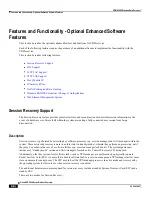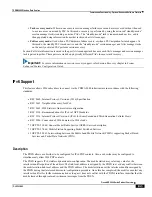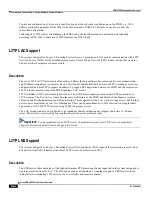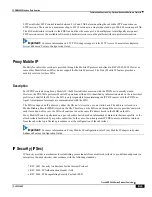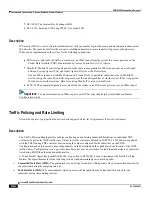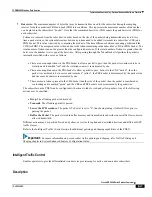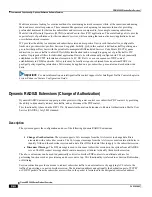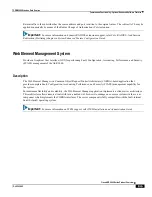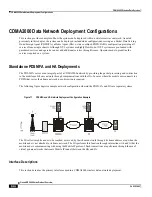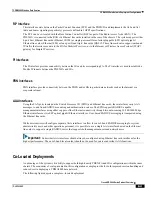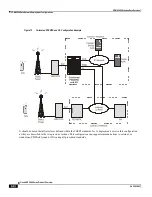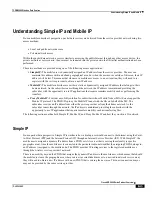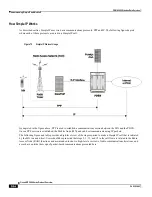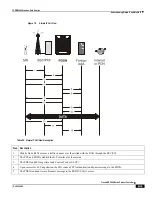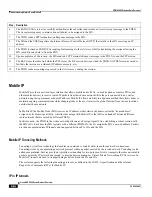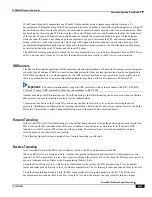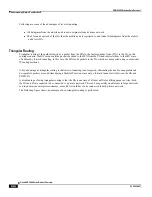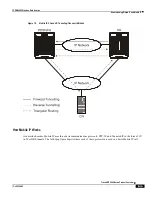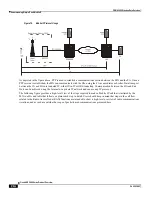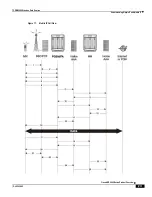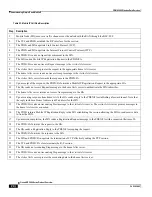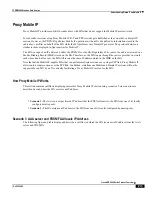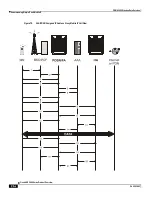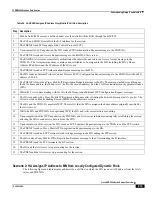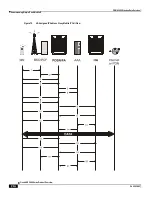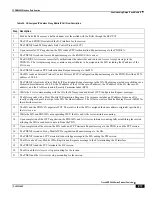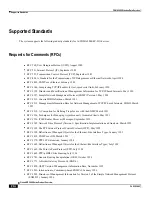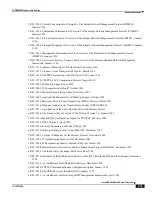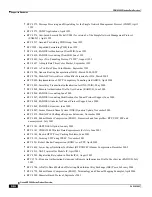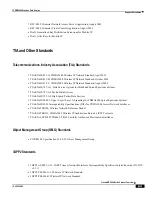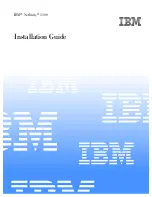
CDMA2000 Wireless Data Services
▀ Understanding Simple IP and Mobile IP
▄ Cisco ASR 5000 Series Product Overview
OL-22938-02
Step
Description
6
The RADIUS AAA server successfully authenticates the subscriber and returns an Access Accept message to the PDSN.
The Accept message may contain various attributes to be assigned to the MN.
7
The PDSN sends a PPP Authentication Response message to the MN.
8
The MN and the PDSN negotiate the Internet Protocol Control Protocol (IPCP) that results in the MN receiving an IP
address.
9
The PDSN forwards a RADIUS Accounting Start message to the AAA server fully establishing the session allowing the
MN to send/receive data to/from the PDN.
10
Upon completion of the session, the MN sends an LCP Terminate Request message to the PDSN to end the PPP session.
11
The BSC closes the radio link while the PCF closes the R-P session between it and the PDSN. All PDSN resources used to
facilitate the session are reclaimed (IP address, memory, etc.).
12
The PDSN sends accounting stop record to the AAA server, ending the session.
Mobile IP
Mobile IP provides a network-layer solution that allows mobile nodes (MNs, i.e. mobile phones, wireless PDAs, and
other mobile devices) to receive routed IP packets from their home network while they are connected to any visitor
network using their permanent or home IP address. Mobile IP allows mobility in a dynamic method that allows nodes to
maintain ongoing communications while changing links as the user traverses the global Internet from various locations
outside their home network.
In Mobile IP, the Mobile Node (MN) receives an IP address, either static or dynamic, called the ―home address‖
assigned by its Home Agent (HA). A distinct advantage with Mobile IP is that MNs can hand off between different
radio networks that are served by different PDSNs.
In this scenario, the PDSN in the visitor network performs as a Foreign Agent (FA), establishing a virtual session with
the MN's HA. Each time the MN registers with a different PDSN/FA, the FA assigns the MN a care-of-address. Packets
are then encapsulated into IP tunnels and transported between FA, HA, and the MN.
Mobile IP Tunneling Methods
Tunneling by itself is a technology that enables one network to send its data via another network's connections.
Tunneling works by encapsulating a network protocol within a packet, carried by the second network. Tunneling is also
called encapsulation. Service providers typically use tunneling for two purposes; first, to transport otherwise un-routable
packets across the IP network and second, to provide data separation for Virtual Private Networking (VPN) services. In
Mobile IP, tunnels are used to transport data packets between the FA and HA.
The system supports the following tunneling protocols, as defined in the IS-835-A specification and the relevant
Request For Comments (RFCs) for Mobile IP:
IP in IP tunnels
Summary of Contents for ASR 5000 Series
Page 1: ......
Page 26: ......
Page 48: ...New In Release 10 0 SCM Features Cisco ASR 5000 Series Product Overview OL 22938 02 ...
Page 50: ......
Page 58: ......
Page 68: ......
Page 126: ......
Page 138: ......
Page 146: ......
Page 218: ......
Page 236: ......
Page 356: ......
Page 374: ......
Page 422: ......
Page 496: ......
Page 572: ......
Page 654: ......
Page 700: ......
Page 726: ......
Page 784: ......
Page 816: ......
Page 844: ......
Page 906: ......
Page 926: ......
Page 942: ......
Page 943: ...Cisco ASR 5000 Series Product Overview OL 22938 02 Chapter 30 Technical Specifications ...
Page 966: ......
Page 972: ......

